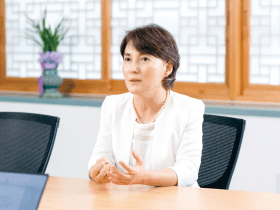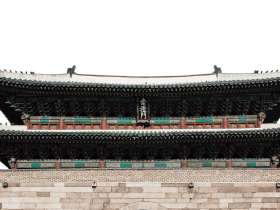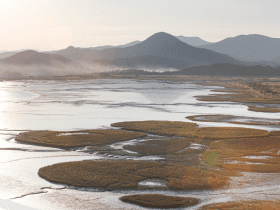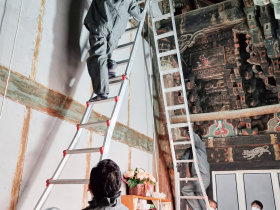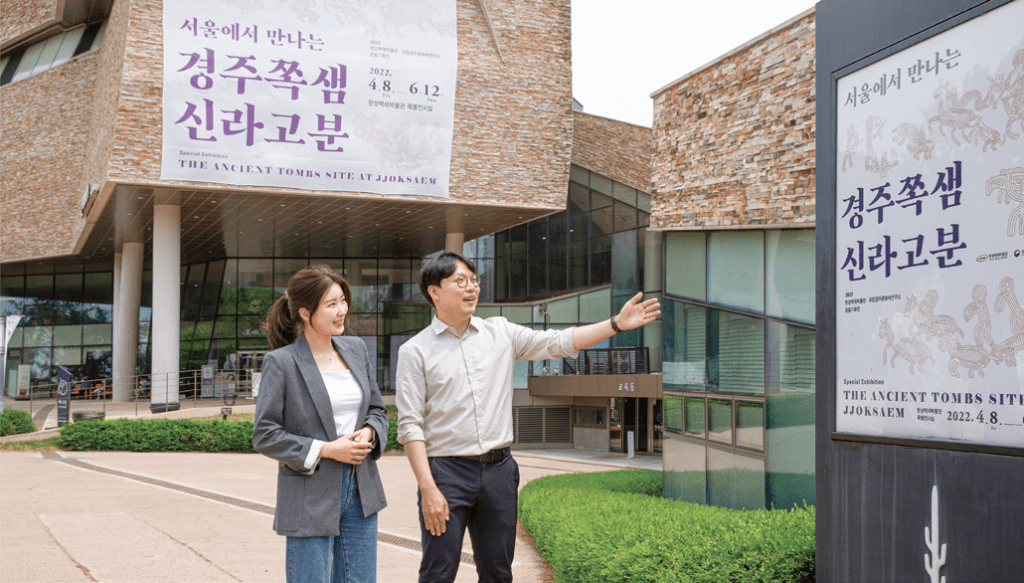

The Hanseong Period (18 BCE – CE 475) refers to when Baekje’s capital was located in Wiryeseong, Hanam, until it moved to Ungjin in 475. Hanseong was the capital of Baekje for 500 years of the nearly 700-year history of Baekje. An exhibition on the Jjoksaem District of Gyeongju, the capital of Silla, was held in the ancient capital of Baekje. What would it be like to encounter the capital of Silla in the heart of Baekje? Researcher Jeong, Daehong of the Gyeongju National Research Institute of Cultural Heritage and Korean language and culture YouTuber “Korean Unnie” visited the exhibition.
An Opportunity to Identify Results of Excavation of Silla Tombs in Jjoksaem District
This special exhibition “The Ancient Tombs Site at Jjoksaem” is the second joint project of the Gyeongju National Research Institute of Cultural Heritage and the Seoul Baekje Museum. In 2019, the two institutes joined hands to present a special exhibition “Wolseong Palace of Silla” presenting the living space of the Silla people and this time, the exhibit centers on the tombs, the space of death, and burial goods recovered from tombs. The exhibition aimed to introduce the result of the excavation of Silla tombs from the Jjoksaem District in Gyeongju, to the citizens of Seoul, who had difficulty accessing the Silla tombs and relics.
The Gyeongju National Research Institute of Cultural Heritage began excavation campaign on the remains of the Jjoksaem area in 2007. The site holds an important place in Korea’s archaeological study, but the full-scale investigation came rather late. After the Silla tombs were excavated in the 1970s, the Cheonmachong Tomb and Hwangnamdaechong Tomb were recognized for their values and named the Daereungwon Ancient Tomb Complex; but the Jjoksaem site, right next to the complex, was excluded from the designation. However, the academia pointed out the ruins are not properly managed and preserved considering its importance and the major investigation project began afterward. The results of the investigation are fully covered at the exhibition.
Life of Silla People Seen through Their Burial Contexts
It is presumed that the site was a cemetery burying people living in the royal capital of Silla. Some of the tombs found on the site are huge, reaching up to 30 meters in length, but small tombs are about 3-4 meters long. Researcher Jeong Daehong said, “Considering the splendid metal crafts and large amounts of grave goods in the larger tombs show that the tombs belonged to the nobles and royalty of Silla.” On the other hand, the smaller tombs are estimated to be the tombs of people of lower ranks due to the small number of burial accessories. Korean Unnie said, “It reminds me of ‘wooden chamber tomb’ that I learned from the Korean history class,” after touring the exhibition, adding that she is curious about the life of Silla people found from the site.
As of now, about 500 tombs, estimated to be wooden chamber tombs, were found from the site and take up the largest quantity among the grave types from the site. Researcher Jeong Daehong said, “We can find out about life and death of Silla people in high and low ranks through burial contexts,” and “Brazier-shaped jars from the site was made around the 3rd century and provides information on when the tomb was built.”
About 100 stone-lined tombs and 37 jar coffins tombs were also found at the Jjoksaem site and most of the tombs are presumed to be built during the 5th century. Most of the stone-lined tombs are small in size with few amounts of grave goods, suggesting that they belong to the lower ranks, while the jar coffin tombs using large jars are estimated to be the tombs of young children. The jar coffin tombs provide an insight into the ancient society with high infant child mortality rates.




Goods From Grave Out Into World
A variety of relics were identified from the tombs of the site. Tomb itself is a very valuable historical material, but the artifacts from the tomb provide precious information about the tomb. Among the relics found from the site, the horse armor excavated from a wooden chamber in Tomb No. C10 drew much attention. Horse armors have been recovered in the past, but in most cases only partially found and it was difficult to restore them to their original state. However, an whole horse armor was found intact in Tomb No. C10, providing great resources to the study of ancient heavy cavalry.
A long-necked jar inscribed with a procession scene, presumed to be used for rituals, was excavated from the stones surrounding the base of Tomb No. 44. The inscribed scene consists of a procession, dance and hunting and it is considered an important material showcasing the idea of the afterlife of ancient Silla people.




